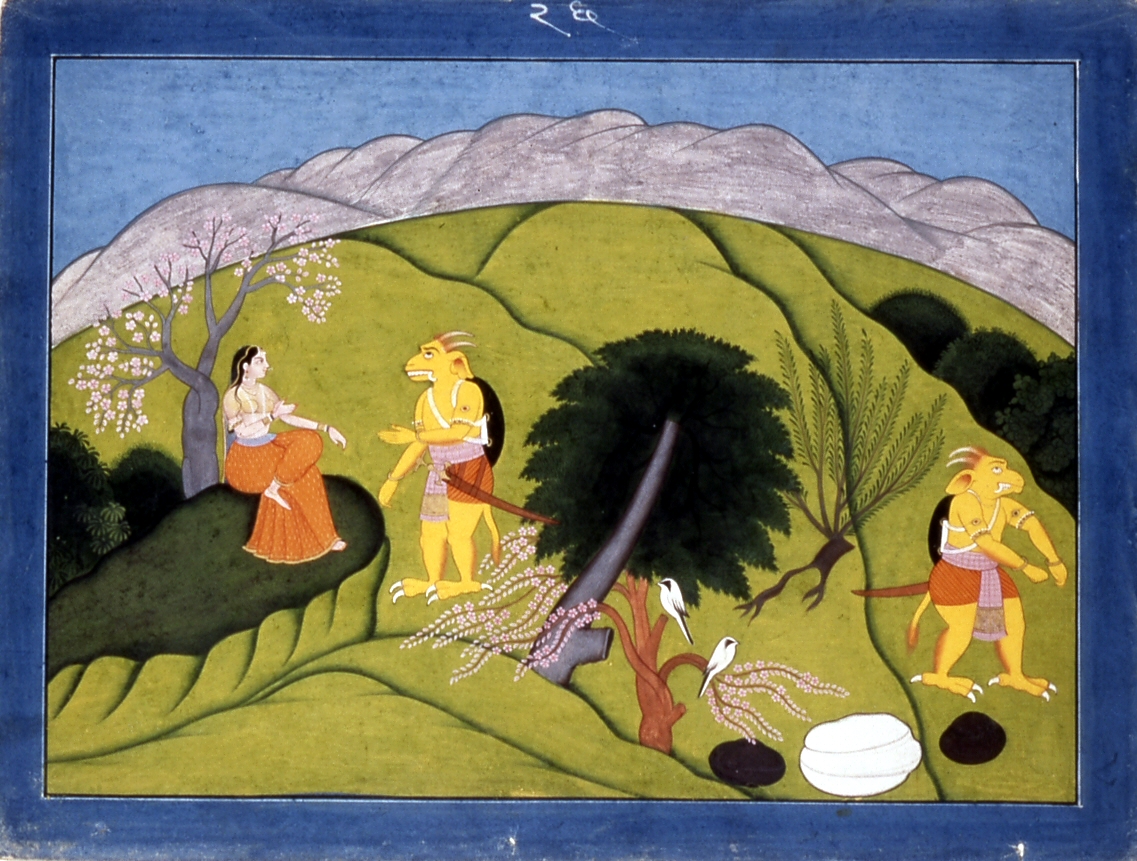Devi with Shumbha's Messenger
(India, Nepal, and Tibet)
The demon Shumbha sends a messenger to the great goddess Devi asking her to become his wife. The Sanskrit text of the Devimahatmya (ca. 6th century), written on the back of the leaf, includes the goddess's reply:
He who conquers me in battle, removes my pride and is my match in strength in the world shall be my husband.
So let Shumbha come here. . . . Vanquishing me here, let him soon take my hand in marriage. Why delay?
At the far right, the messenger is depicted a second time, on his way back to Shumbha, to whom he will report the goddess's response.
Provenance
Provenance (from the French provenir, 'to come from/forth') is the chronology of the ownership, custody, or location of a historical object. Learn more about provenance at the Walters.
John and Berthe Ford, Baltimore [date and mode of acquisition unknown]; Walters Art Museum, 2001, by gift.
Exhibitions
| 2001-2003 | Desire and Devotion: Art from India, Nepal, and Tibet in the John and Berthe Ford Collection. The Walters Art Museum, Baltimore; Santa Barbara Museum of Art, Santa Barbara; Albuquerque Museum, Albuquerque; Birmingham Museum of Art, Birmingham; Hong Kong Museum of Art, Hong Kong. |
Geographies
India, Guler (Place of Origin)
Measurements
7 1/4 x 10 in. (18.4 x 25.4 cm)
Credit Line
Gift of John and Berthe Ford, 2001
Location in Museum
Not on view
Accession Number
In libraries, galleries, museums, and archives, an accession number is a unique identifier assigned to each object in the collection.
In libraries, galleries, museums, and archives, an accession number is a unique identifier assigned to each object in the collection.
W.880


